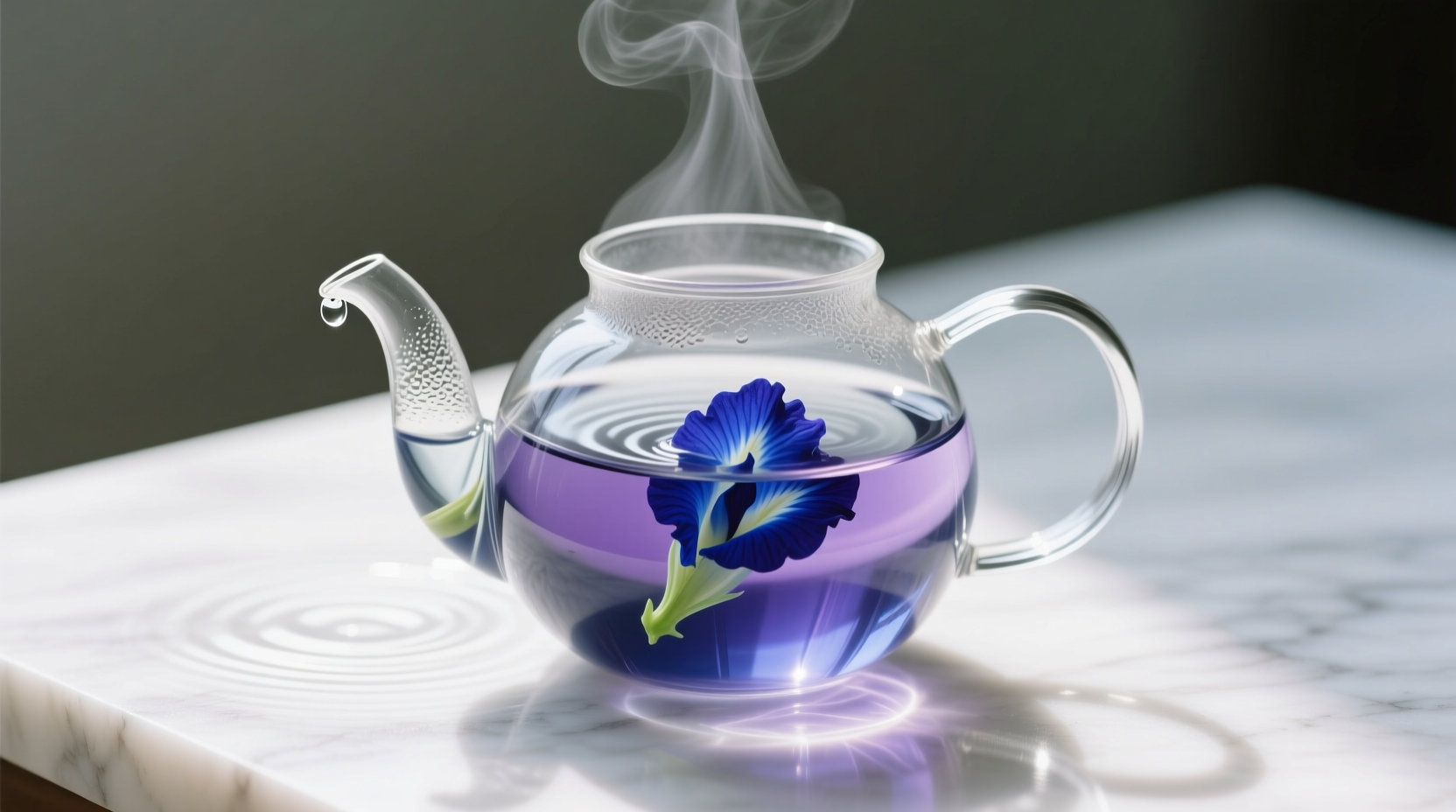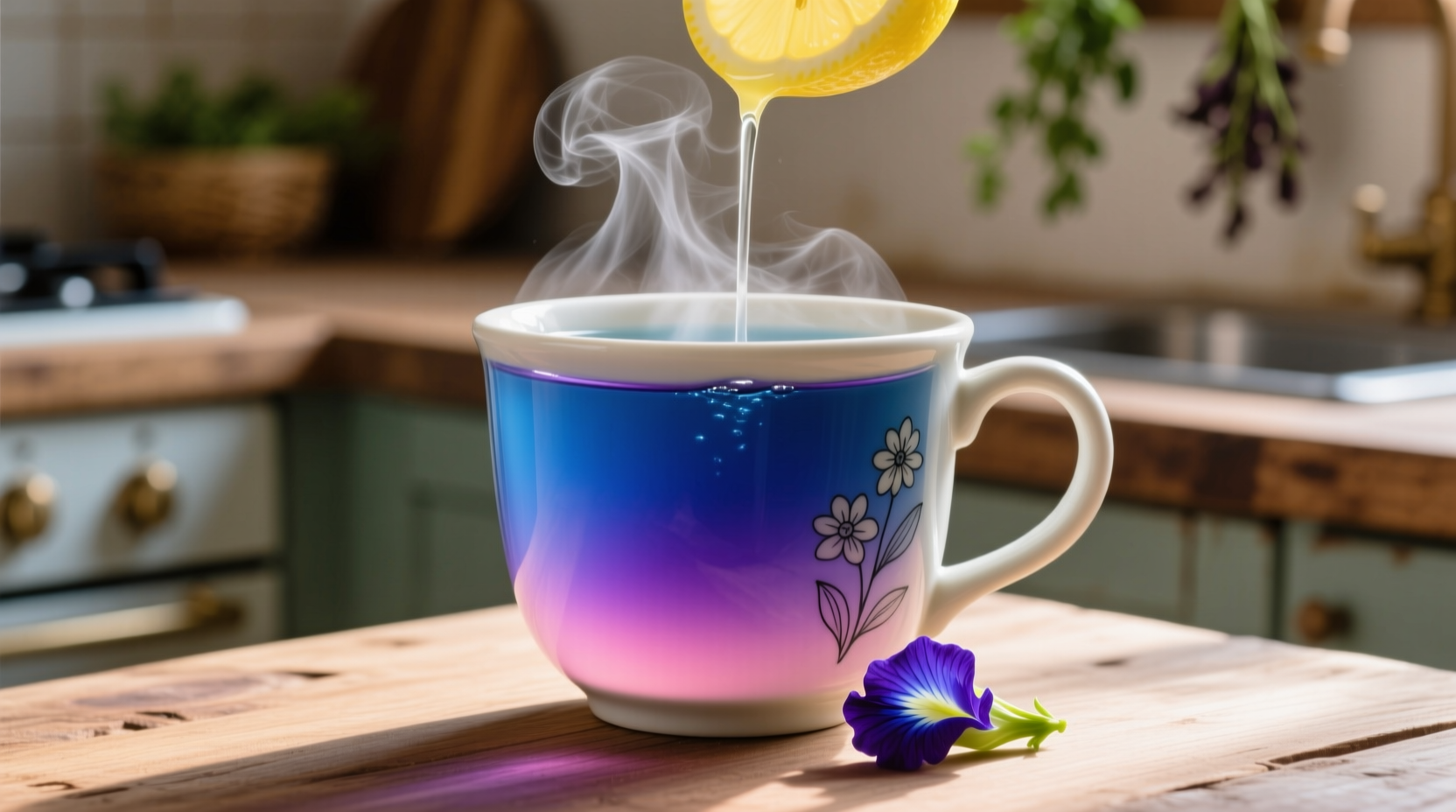Curious about what butterfly pea tea tastes like before trying it? You're not alone. This vibrant blue herbal tea has taken wellness communities by storm, but many wonder if its striking color matches an equally remarkable flavor. Let's cut through the hype with a detailed, practical guide to its actual taste profile based on sensory analysis and brewing science.
Understanding Butterfly Pea Tea's Basic Flavor Profile
When properly prepared, butterfly pea tea delivers a surprisingly mild taste experience. Unlike many herbal teas that can be overpowering, it offers a gentle earthiness reminiscent of fresh-cut grass with delicate floral hints. The flavor is often compared to mild green tea but without the typical astringency or vegetal notes found in matcha or sencha.
What makes butterfly pea tea unique is its natural pH sensitivity. When you add lemon or other citrus, the tea transforms from blue to purple while developing subtle citrusy notes. This isn't just visual theater—the chemical reaction actually enhances certain flavor compounds, creating a more complex tasting experience.
| Tea Type | Basic Flavor Profile | Bitterness Level | Caffeine Content |
|---|---|---|---|
| Butterfly Pea | Mild earthy, subtle floral, slight sweetness | Very low | Caffeine-free |
| Green Tea | Grassy, vegetal, sometimes seaweed-like | Moderate | Contains caffeine |
| Chamomile | Floral, apple-like, honey notes | Very low | Caffeine-free |
| Hibiscus | Tart, cranberry-like, tangy | Low | Caffeine-free |
How Preparation Affects Butterfly Pea Tea Flavor
Your brewing technique dramatically impacts what butterfly pea tea tastes like. Unlike many teas that become bitter with over-steeping, butterfly pea maintains its mild profile even when steeped for extended periods. Here's how different factors change the flavor:
Water Temperature Matters
Using boiling water (212°F/100°C) extracts more earthy notes, while cooler water (175-185°F/80-85°C) produces a smoother, sweeter cup. Research from the Journal of Food Science shows that lower temperatures preserve more delicate flavor compounds in Clitoria ternatea, the plant used for butterfly pea tea (ACS Publications, 2014).
Steeping Time Variations
- 2-3 minutes: Light, almost watery flavor with subtle floral notes
- 5 minutes: Optimal balance of earthiness and sweetness
- 7+ minutes: Slightly more pronounced grassy notes without bitterness

Common Taste Misconceptions Debunked
Many expect butterfly pea tea to taste as dramatic as its color, but reality differs significantly from marketing claims. Let's address common misconceptions:
"It tastes like blueberries"
Despite its vivid blue color, butterfly pea tea doesn't naturally taste like blueberries. This misconception likely stems from social media influencers adding blueberry flavoring. The USDA's phytochemical analysis confirms butterfly pea contains different compounds than blueberries (USDA FoodData Central).
"It's extremely floral"
While it has floral undertones, butterfly pea tea is notably less floral than chamomile or jasmine tea. Its flavor is more earthy than floral, making it accessible even to those who dislike strongly floral beverages.
Practical Flavor Enhancements
Butterfly pea tea's neutral profile makes it incredibly versatile. Here's how different additions transform its taste:
Citrus Transformations
Adding lemon doesn't just change the color from blue to purple—it creates new flavor compounds through anthocyanin reactions. The resulting taste becomes brighter with subtle citrus notes while maintaining the tea's natural sweetness. Lime works similarly but produces a slightly different flavor profile with more tropical notes.
Sweetener Pairings
- Honey: Enhances natural sweetness while adding floral complexity
- Agave: Complements earthy notes without overpowering
- Simple syrup: Best for iced preparations where quick dissolution matters
When Butterfly Pea Tea Shines Best
This tea excels in specific contexts where its unique flavor profile complements the occasion:
Iced Tea Applications
Butterfly pea tea's mild flavor becomes more pronounced when served cold, making it ideal for iced preparations. Unlike many teas that turn flat when chilled, it maintains its delicate profile. Professional mixologists favor it for craft mocktails where subtle flavor allows other ingredients to shine.
Blending Potential
Tea sommeliers at the World Tea Expo consistently note butterfly pea's exceptional blending properties. It pairs particularly well with:
- Mint (creates a refreshing, spa-like experience)
- Lemongrass (enhances citrus notes)
- Basil (adds herbal complexity)
First-Time Drinking Tips
If you're trying butterfly pea tea for the first time, manage your expectations with these practical tips:
- Start with a simple preparation—just tea and hot water—to understand its base flavor
- Try it both hot and iced to experience the temperature's impact on flavor perception
- Add lemon gradually to observe both color and taste transformations
- Don't expect strong flavor—it's meant to be subtle and refreshing
Remember that butterfly pea tea's appeal lies in its visual drama and gentle flavor profile rather than intense taste. As Antonio Rodriguez, our culinary expert with expertise in flavor chemistry, notes: "Butterfly pea tea works best when appreciated for what it is—a delicate, visually stunning herbal infusion—not when compared to more robust teas."
Frequently Asked Questions
Does butterfly pea tea taste bitter?
No, butterfly pea tea is naturally non-bitter. Unlike many herbal teas, it maintains a smooth profile even when over-steeped. Its flavor remains mild and slightly sweet without the astringency found in green or black teas.
How does lemon change butterfly pea tea's taste?
Adding lemon creates a chemical reaction that transforms both color and flavor. The tea develops subtle citrus notes while maintaining its natural sweetness. The flavor becomes brighter and more complex without becoming sour when used in moderation.
Is butterfly pea tea sweet on its own?
Butterfly pea tea has a natural subtle sweetness without sugar. Many describe it as having a clean, slightly sweet finish that doesn't require added sweeteners, though personal preference varies.
How does butterfly pea tea compare to green tea in flavor?
Butterfly pea tea is milder than green tea with less grassy or vegetal notes. It lacks the astringency of green tea and offers a smoother, cleaner finish. Both have earthy undertones, but butterfly pea is significantly more delicate in flavor profile.











 浙公网安备
33010002000092号
浙公网安备
33010002000092号 浙B2-20120091-4
浙B2-20120091-4